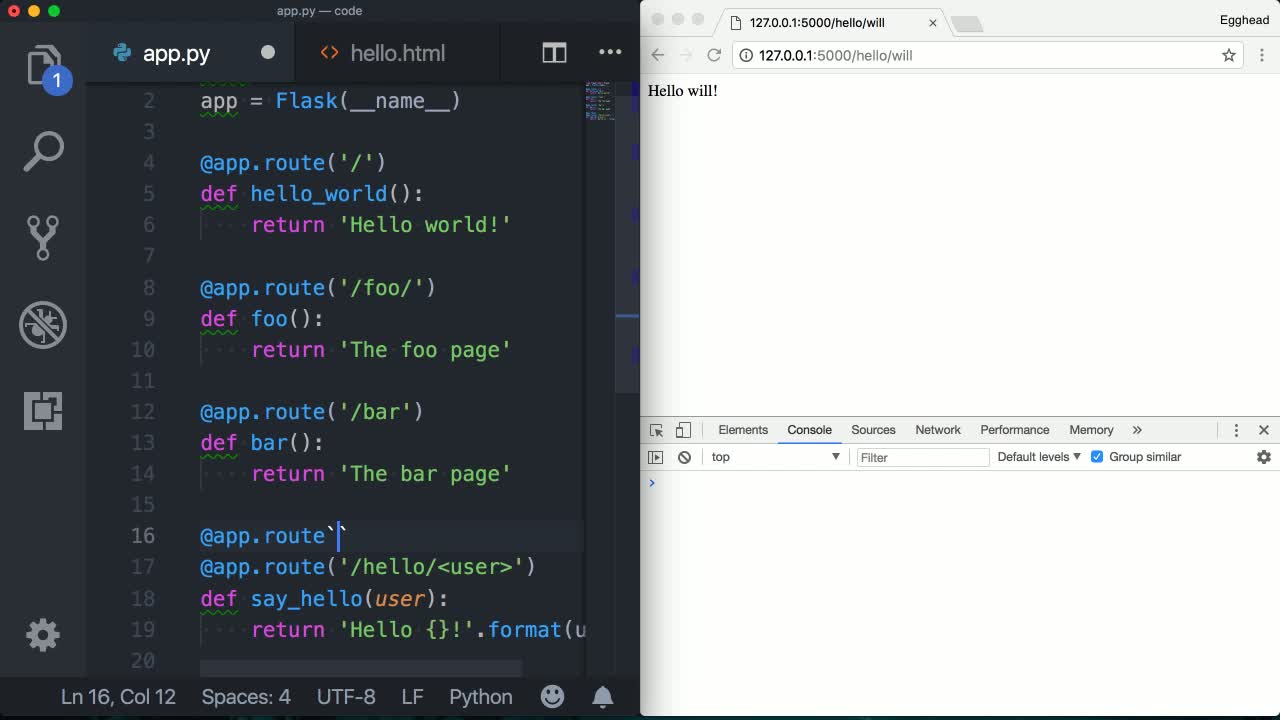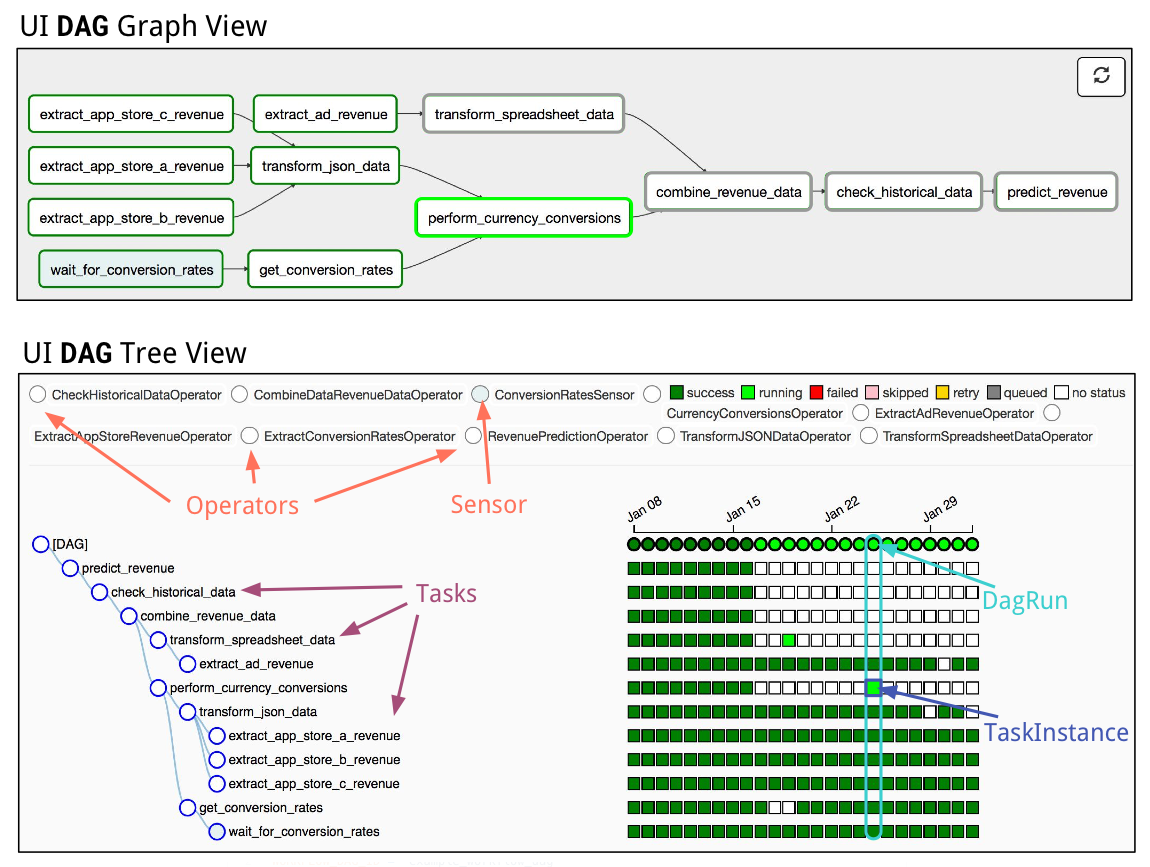Airflow Jinja Template - Assuming you have conn id test_conn you can use macros directly via: Web templates reference¶ variables, macros and filters can be used in templates (see the jinja templating section) the following come for free out of the box with airflow. Web 2 answers sorted by: Which variables and functions are available when templating. Additional custom macros can be added globally through plugins, or at a dag level through the dag.user_defined_macros argument. Web templating airflow passes in an additional set of keyword arguments: The templates_dict argument is templated, so each value in the dictionary is evaluated as a jinja template. Web i've been able to successfully render jinja templates using the function within the baseoperator, render_template. Web the airflow docs say: 5 it works but i'm being asked to not use the variable module and use jinja templating instead this is not accurate recommendation and i'll explain why.
Which variables and functions are available when templating. Web templates reference¶ variables, macros and filters can be used in templates (see the jinja templating section) the following come for free out of the box with airflow. Web airflow leverages the power of jinja templating and this can be a powerful tool to use in combination with macros. Additional custom macros can be added globally through plugins, or at a dag level through the dag.user_defined_macros argument. Adding params to the template_fields in the operator implementation is not enough to force it to render the template. The templates_dict argument is templated, so each value in the dictionary is evaluated as a jinja template. { { conn.test_conn }} so you get any connection attribute like: How to apply jinja templates in your code. For example, say you want to pass the start of the data interval as an environment variable to a bash script using the bashoperator: In this guide, you'll learn the following:
There is absolutely no problem with doing: Assuming you have conn id test_conn you can use macros directly via: In this guide, you'll learn the following: You can use jinja templating with every parameter that is marked as “templated” in the documentation. Web templates reference¶ variables, macros and filters can be used in templates (see the jinja templating section) the following come for free out of the box with airflow. Web templating airflow passes in an additional set of keyword arguments: S3_bucket = variable.get ('bucket_name') print (s3_bucket) example_task () The templates_dict argument is templated, so each value in the dictionary is evaluated as a jinja template. 2 to add to sergiy's response, it depends on where you want to make your intervention. { { conn.test_conn }} so you get any connection attribute like:
Generating Airflow DAGs using Jinja by Ali Masri Medium
Web airflow leverages the power of jinja templating and this can be a powerful tool to use in combination with macros. { { conn.test_conn }} so you get any connection attribute like: My question is does anyone know the requirements to get rendered strings into the ui under the rendered or rendered template tab? Web templates reference¶ variables, macros and.
[Airflow] jinja_template을 활용한 날짜 동적 변수 활용 하는 법(동적 datetime, ds변수 UTC안되는
Web 2 answers sorted by: Sergiy's is the only way for it to work with your template: The templates_dict argument is templated, so each value in the dictionary is evaluated as a jinja template. For example, say you want to pass the start of the data interval as an environment variable to a bash script using the bashoperator: How to.
Flask Jinja2 Example Insularmiseria
Web templating airflow passes in an additional set of keyword arguments: You can use jinja templating with every parameter that is marked as “templated” in the documentation. Additional custom macros can be added globally through plugins, or at a dag level through the dag.user_defined_macros argument. 2 to add to sergiy's response, it depends on where you want to make your.
Airflowjinjatemplateexample
There is absolutely no problem with doing: The templates_dict argument is templated, so each value in the dictionary is evaluated as a jinja template. Web templating airflow passes in an additional set of keyword arguments: { { params.etl_date if params.etl_date is not none else execution_date.strftime ('%y%m%d') }} { { conn.test_conn }} so you get any connection attribute like:
jinja2template · GitHub Topics · GitHub
2 to add to sergiy's response, it depends on where you want to make your intervention. { { conn.test_conn }} so you get any connection attribute like: Which operator fields can be templated and which cannot. Web the airflow docs say: There is absolutely no problem with doing:
Airflowjinjatemplateexample
Web i've been able to successfully render jinja templates using the function within the baseoperator, render_template. Which operator fields can be templated and which cannot. Web obviously, params does not support jinja templating as the sql rendered contains the string literal ' { { task_instance.' rather than the rendered xcom value. It makes sense that specific parameters in the airflow.
Airflowjinjatemplateexample
Web obviously, params does not support jinja templating as the sql rendered contains the string literal ' { { task_instance.' rather than the rendered xcom value. Adding params to the template_fields in the operator implementation is not enough to force it to render the template. Web 2 answers sorted by: S3_bucket = variable.get ('bucket_name') print (s3_bucket) example_task () My question.
[Airflow] User_defined_macros를 이용하여 jinja template의 사용자 정의 변수 활용하기
For example, say you want to pass the start of the data interval as an environment variable to a bash script using the bashoperator: In this guide, you'll learn the following: Adding params to the template_fields in the operator implementation is not enough to force it to render the template. It makes sense that specific parameters in the airflow world.
The Ultimate FastAPI Tutorial Part 6 Serving HTML with Jinja Templates
2 to add to sergiy's response, it depends on where you want to make your intervention. It makes sense that specific parameters in the airflow world (such as certain parameters to pythonoperator ) get templated by. Web templates reference¶ variables, macros and filters can be used in templates (see the jinja templating section) the following come for free out of.
GitHub appgenerator/jinjatemplate Jinja Template Free
Sergiy's is the only way for it to work with your template: Additional custom macros can be added globally through plugins, or at a dag level through the dag.user_defined_macros argument. You can use jinja templating with every parameter that is marked as “templated” in the documentation. One for each of the jinja template variables and a templates_dict argument. Which variables.
My Question Is Does Anyone Know The Requirements To Get Rendered Strings Into The Ui Under The Rendered Or Rendered Template Tab?
In this guide, you'll learn the following: Web obviously, params does not support jinja templating as the sql rendered contains the string literal ' { { task_instance.' rather than the rendered xcom value. 2 to add to sergiy's response, it depends on where you want to make your intervention. { { conn.test_conn.host }}, { { conn.test_conn.login }}, { { conn.test_conn.password }} and so on.
{ { Params.etl_Date If Params.etl_Date Is Not None Else Execution_Date.strftime ('%Y%M%D') }}
Sergiy's is the only way for it to work with your template: For example, say you want to pass the start of the data interval as an environment variable to a bash script using the bashoperator: Additional custom macros can be added globally through plugins, or at a dag level through the dag.user_defined_macros argument. Adding params to the template_fields in the operator implementation is not enough to force it to render the template.
Web Airflow Leverages The Power Of Jinja Templating And This Can Be A Powerful Tool To Use In Combination With Macros.
Web airflow leverages jinja, a python templating framework, as its templating engine. Web templates reference¶ variables, macros and filters can be used in templates (see the jinja templating section) the following come for free out of the box with airflow. Which variables and functions are available when templating. Web the airflow docs say:
Web 2 Answers Sorted By:
{ { conn.test_conn }} so you get any connection attribute like: It makes sense that specific parameters in the airflow world (such as certain parameters to pythonoperator ) get templated by. The templates_dict argument is templated, so each value in the dictionary is evaluated as a jinja template. 5 it works but i'm being asked to not use the variable module and use jinja templating instead this is not accurate recommendation and i'll explain why.

![[Airflow] jinja_template을 활용한 날짜 동적 변수 활용 하는 법(동적 datetime, ds변수 UTC안되는](https://img1.daumcdn.net/thumb/R800x0/?scode=mtistory2&fname=https:%2F%2Fblog.kakaocdn.net%2Fdn%2FcsL9Ic%2FbtrMtGmuu3w%2FnoJRPnQDetPLKE5mLZnQH1%2Fimg.png)




![[Airflow] User_defined_macros를 이용하여 jinja template의 사용자 정의 변수 활용하기](https://img1.daumcdn.net/thumb/R1280x0/?scode=mtistory2&fname=https:%2F%2Fblog.kakaocdn.net%2Fdn%2FqWCcw%2FbtrY2oADnDO%2F4K31UpmQe8bH9LM8xwMfX0%2Fimg.png)
